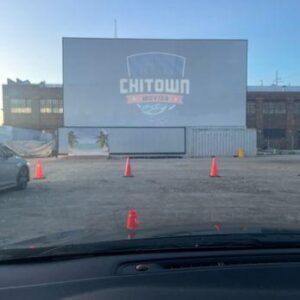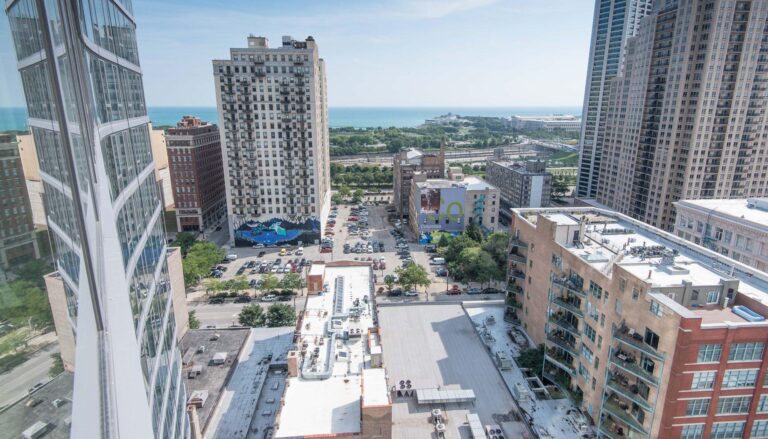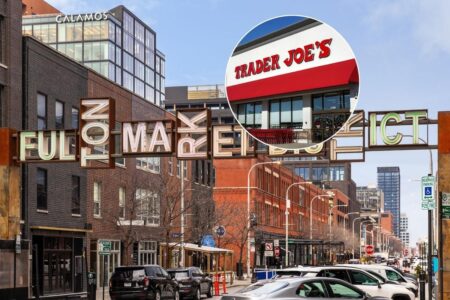South Loop Growth Site Hits Market Amid Changing Chicago Residential Landscape
A major real estate developer has recently put up for sale a prime parcel in Chicago’s South Loop that was originally intended for a 25-story residential tower. Situated near the bustling intersection of Roosevelt Road and State Street,this site has long been viewed as a potential catalyst for transforming the neighborhood’s skyline and adding substantial housing capacity. However, evolving economic conditions and urban trends have prompted a strategic reassessment, opening the door for new investors or developers to envision alternative projects on this valuable tract.
Zoned for mid- to high-rise mixed-use development, the property offers important opportunities for innovative urban design. Highlights of the listing include:
- Approximately 3,500 square feet of street frontage
- Excellent connectivity via multiple public transit options,including the CTA Red Line
- Close proximity to retail districts,entertainment venues,and the scenic lakefront
As Chicago’s South Loop continues its rapid change,this parcel represents a rare chance to influence the neighborhood’s next phase of growth.
| Property Feature | Specification |
|---|---|
| Lot Dimensions | 15,000 sq. ft. |
| Zoning Classification | DX-7 (Downtown Mixed-Use) |
| Previously Approved Building Height | 25 Stories |
| Nearby Transit | CTA Red Line, Multiple Bus Routes |
| Current Status | Available for Purchase |
Economic and Market Challenges Behind Project Withdrawal
The decision to discontinue the original 25-story apartment tower plan stems from a combination of economic pressures and shifting market preferences. Developers are grappling with escalating construction expenses-which have surged by over 25% compared to the previous year-driven by inflation in materials and labor costs. Concurrently, urban residential demand has softened as some buyers gravitate toward suburban living, influenced by lifestyle changes accelerated during the pandemic. Rising interest rates, now hovering around 7%, have further tightened financing options, complicating project feasibility.
Additional factors influencing the sale include:
- Greater availability of alternative housing options in adjacent neighborhoods, diluting demand
- More stringent municipal zoning and planning regulations that extend approval timelines
- Heightened investor caution amid economic uncertainty, limiting fresh capital inflows
| Challenge | Effect | Result |
|---|---|---|
| Construction Cost Inflation | +25% year-over-year | Budget overruns risk |
| Interest Rate Increase | Up to 7% | Higher borrowing costs |
| Zoning and Regulatory Hurdles | Lengthened approval process | Project delays |
Exploring New Development Possibilities in the South Loop
With the original high-rise plan shelved, the South Loop parcel now presents a compelling prospect for diverse development concepts. Its strategic location near transit corridors, cultural institutions, and established neighborhoods makes it ideal for mixed-use projects that blend residential, commercial, and recreational spaces. Forward-thinking developers are considering designs that not only address housing shortages but also stimulate local economic activity through retail and office components.
Key factors to consider for future proposals include:
- Zoning adaptability: Potential to integrate multiple uses within a single development
- Community involvement: Engaging local stakeholders to ensure projects meet neighborhood needs
- Eco-pleasant construction: Incorporating sustainable materials and energy-efficient systems aligned with Chicago’s climate goals
| Development Element | Advantages | Potential Obstacles |
|---|---|---|
| Residential Density | Helps meet growing housing demand | Possible height restrictions |
| Commercial Components | Supports local economy and job creation | Risk of market oversaturation |
| Public Spaces and Amenities | Improves neighborhood livability | Budget and maintenance costs |
Strategic Guidance for Investors and Urban Planners
For investors and urban planners monitoring Chicago’s evolving real estate scene, adopting a multifaceted, data-informed strategy is essential. The recent listing of this South Loop site highlights the need to stay attuned to zoning updates,market absorption rates,and shifting investment climates. Proactive tracking of land availability and project developments can uncover timely opportunities while mitigating risks in a fluctuating market.
Effective oversight also involves fostering collaboration across public and private sectors and utilizing advanced analytical tools. Key recommendations include:
- Maintaining ongoing dialogue with city planning officials to anticipate regulatory changes
- Employing Geographic Information Systems (GIS) for spatial trend analysis
- Monitoring public infrastructure investments that can enhance neighborhood appeal
- Utilizing dynamic financial models to evaluate project viability amid economic shifts
| Critical Factor | Influence on Urban Development |
|---|---|
| Zoning Versatility | Accelerates approvals and supports adaptive reuse |
| Market Absorption Rate | Reflects demand and guides project scale |
| Infrastructure Funding | Enhances area desirability and property values |
Conclusion: Navigating the Future of South Loop Development
As the South Loop neighborhood continues its dynamic evolution, the future of the once-planned 25-story apartment tower remains uncertain. The developer’s decision to list the site for sale underscores the complex interplay of economic, regulatory, and market forces shaping Chicago’s residential real estate sector. Stakeholders and market watchers alike will be keenly observing how this pivotal parcel’s next chapter unfolds, potentially setting new precedents for urban growth and investment in one of the city’s most rapidly changing districts.







